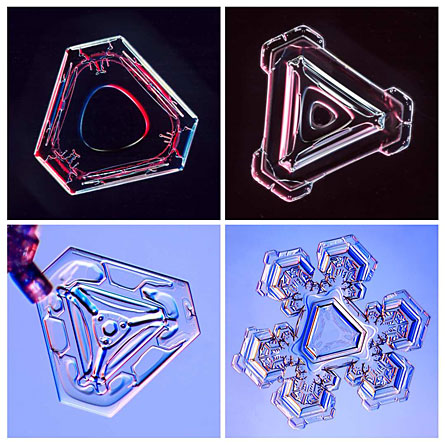- More than 2 years ago
Flurries of questions about mysterious triangle-shaped snowflakes may soon subside, thanks to new research on snowflake formation. Most snowflakes are hexagons because of the arrangement of hydrogen bonds in the water molecule. But the new study, appearing online at arxiv.org (http://arxiv.org/abs/0911.4267) and in an upcoming issue of The Microscope, suggests that after hexagonal flakes, oddball triangular flakes are the most prevalent.

Study coauthors Kenneth Libbrecht and Hannah Arnold of Caltech in Pasadena propose an aeronautical reason for the triangular geometry. The results help solve the very old puzzle of how the unexpected flakes form, Libbrecht says.
Snowflake enthusiasts — such as Libbrecht, who photographs snowflakes — have spotted triangular snowflakes in the wild. The snowflake scientific literature, which goes back almost two centuries, is thick with such sightings, Libbrecht adds, but no one has explained why. “People have noticed them for hundreds of years.”
To address the mystery, the researchers created snowflakes in the laboratory and recorded the shapes. In conditions that simulate natural snowfall, the vast majority of flakes were the standard hexagons, but more of them were triangular than a statistical model had predicted, the team found. Some of these flakes still have six sides but an overall triangular shape, created by three short edges and three long ones. The abundance of triangle-shaped flakes suggests that they may be more common in nature than chance alone would allow.
Tiny impurities, such as dust particles, can cause one edge of the falling snowflake to tilt up as it falls, Libbrecht says. The snowflake sides that are pointed down grow faster as the wind blows by, leading to a stable triangular pattern. Once a triangle shape gets started, the snowflake remains triangular despite any later bumps as it falls, the researchers propose.






